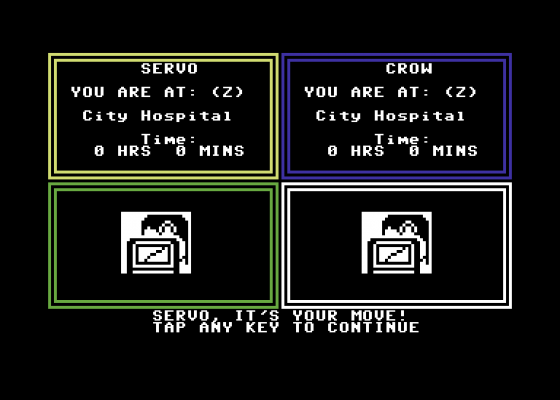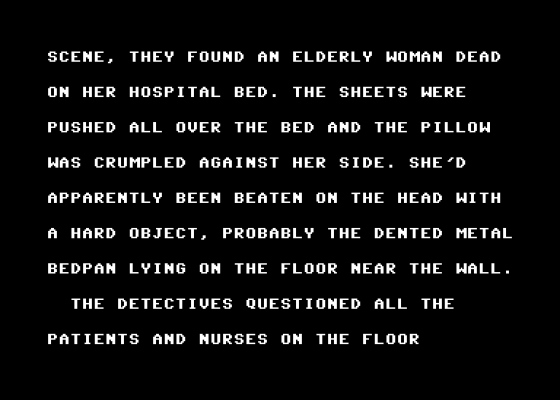
Computer Gamer
 1st May 1985
1st May 1985
Categories: Review: Software
Publisher: CBS
Machine: Commodore 64
Published in Computer Gamer #2
Murder By The Dozen
In the beginning of whodunnt games there was Cluedo. This involved finding the murderer by working out which "suspect" card was missing, etc. In other words, it was just a logic game in a murder setting - then came the big adventures of Sherlock Holmes or Deadline. Here, your success comes from "talking" to various suspects, examining clues and drawing the appropriate conclusions. Murder By The Dozen fits nicely into the middle ground between these two extremes.
At the start of each turn, you are presented with a choice of seven options. The first three give you a chance to interview people present at your current location. The second three allow you to examine potential clues and the last choice lets you move to another location. Instead of telling you what you have discovered on the screen, where all your rivals can see, you are given a series of numbers which correspond to clues printing in the clues book, which you can look up privately.
These may be useful bits of information or they may just say "No Clue". There is nothing more frustrating than thinking you have found a good series of hints and then finding that none of them are any good. All this questioning and hunting for clues takes time which is added to your tally. At the start of each turn, the person with the least elapsed time goes first etc.

As the name suggests there are twelve cases for you and your friends to solve (up to four can play). Solving a case involves answering assorted questions posed at the beginning of the mystery. These always include naming the murderer, and usually backing your judgement by proving a motive or producing the vital evidence.
A word of warning here. The answers required are very precise and detailed. In the first case, I correctly named the murderer and gave the motive. However, I did not prove the motive and so was out of the game.
The game is beautifully packaged. A confidential envelope contains a detective manual (instructions, hints and tips and case histories), a book of clues, a pad for making notes and a book of solutions. Should you be tempted to cheat, and look up the answers before playing the game, you can do so but it only spoils the game for you and wastes your money. The answers however are written in such a way that a casual peek will give nothing away. You have to put a sheet of red plastic over the page before the solution becomes visible.

The argument against this type of game is that, once you have played a case, you cannot play it again. Whilst this is true, it has never stopped people playing adventures before.
However, whilst adventures may take you weeks to solve, the cases here will take an afternoon at the most. For that reason, I would suggest you invite some friends round and play with/against them.
Be prepared though to have your grey cells simulated. It's not sufficient just to wander round and collect clues. You will have to decide which ones are genuine and how they all fit together.









